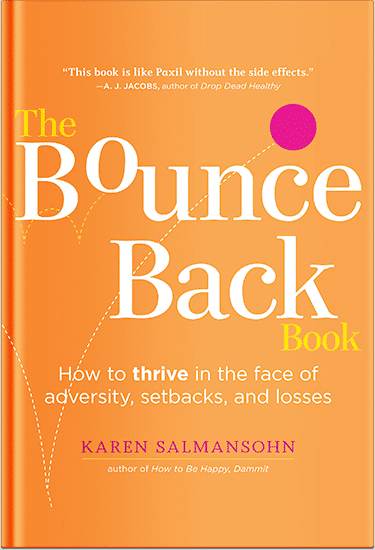 Identifying silent endometriosis early allows doctors to detect reproductive problems that often go unnoticed during routine checkups. When the condition is found at a younger age, patients gain access to a wider range of treatments that reduce the risk of infertility and long-term health complications.
Identifying silent endometriosis early allows doctors to detect reproductive problems that often go unnoticed during routine checkups. When the condition is found at a younger age, patients gain access to a wider range of treatments that reduce the risk of infertility and long-term health complications.
Early evaluation also gives couples more time to make informed family planning decisions. Here are a few insights into how silent endometriosis affects fertility and relationships:
Detecting Silent Endometriosis
Silent endometriosis can disrupt key reproductive functions. Abnormal tissue growth or adhesions may block the fallopian tubes, reduce ovarian reserve, or alter the uterine environment, making conception more difficult. These changes often delay pregnancy and reshape how couples approach family planning. Because fertility challenges place strain on expectations and timelines, relationships may also feel the impact. When detected early, couples can follow a precise medical plan instead of relying on uncertain estimates during the planning process.
Understanding the Fertility Impact
Even without visible symptoms, silent endometriosis can interfere with implantation and other fertility processes, making prompt testing a key part of reproductive care. The condition may lower embryo implantation rates or compromise egg quality, reducing the effectiveness of treatment if left undiagnosed. Without specialized testing, couples might pursue fertility care without realizing endometriosis is the underlying issue. This gap influences medical outcomes and impacts how partners make decisions about treatment. By recognizing the link between silent endometriosis and infertility, couples can choose more effective options that support their goals.
Seeking Specialized Testing
Specialized testing often involves an endometrial biopsy taken during the post-ovulation phase to study molecular markers linked to uterine inflammation. Lab analysis identifies these markers, while a pathologist reviews the sample for inflammation, atypical changes, or fertility-related concerns. These results give clinicians insight into uterine conditions that standard imaging cannot reveal.
Detailed pathology reports and marker evaluations guide decisions about surgery or targeted medical treatment. With clear results, physicians can determine whether to proceed with laparoscopy, prescribe medication, or recommend referral to a specialist. This level of diagnostic detail provides couples with reliable clinical data to shape their next steps in family planning.
Understanding Your Treatment Options
When professionals identify inflammation or endometriosis in the uterus, physicians can use hormone-suppressive therapies to control the inflammatory response. If endometrial tissue spreads outside the uterus, surgical options such as laparoscopy allow direct observation and tissue removal. Clinicians rely on these findings to guide treatment and create conditions that support successful implantation.
Treatment decisions influence the course of fertility care and require active preparation from both partners. Medical suppression involves a set treatment timeline, while surgical recovery determines when fertility options may resume. By understanding the chosen intervention and schedule, couples can plan caregiving needs, organize logistics, and coordinate clinic visits. This consistent structure helps maintain steady progress throughout the fertility process.
Optimizing Fertility Care
Early diagnostic sampling gives clinicians the evidence needed to select the most effective treatment approach. Testing identifies or rules out uterine inflammation as a contributing factor and directs the choice toward surgical procedures, medical therapies, or assisted reproductive techniques. Detecting the condition early reduces unnecessary trial-and-error approaches and directs resources toward interventions with higher clinical value. For couples, this approach maximizes both time and clinic resources as they pursue conception.
Early diagnosis also improves the sequence of treatments, placing them in the most effective order to achieve better outcomes. Organized treatment prevents unnecessary waiting periods between interventions and helps couples coordinate realistic timelines for every stage of care. With a structured plan built from biopsy results, partners can prepare for work commitments, travel arrangements, and caregiving needs while aligning schedules with the treatment process. A clear roadmap gives both patients and clinicians a reliable guide to move through the fertility journey.
Get Tested for Silent Endometriosis
A biopsy that identifies inflammation markers, along with optional testing for endometritis, gives clinicians precise data to guide treatment. These results help determine whether surgery, medical therapy, or assisted reproduction offers the most effective path forward. When treatments follow marker-based outcomes, patients benefit from clear clinical guidance and better timing of fertility procedures. In the context of silent endometriosis, early diagnosis and a structured plan allow partners to coordinate medical choices, manage schedules, and maintain a shared focus on family-building goals. Get tested for silent endometriosis today.
P.S. Before you zip off to your next Internet pit stop, check out these 2 game changers below - that could dramatically upscale your life.
1. Check Out My Book On Enjoying A Well-Lived Life: It’s called "Your To Die For Life: How to Maximize Joy and Minimize Regret Before Your Time Runs Out." Think of it as your life’s manual to cranking up the volume on joy, meaning, and connection. Learn more here.
2. Life Review Therapy - What if you could get a clear picture of where you are versus where you want to be, and find out exactly why you’re not there yet? That’s what Life Review Therapy is all about.. If you’re serious about transforming your life, let’s talk. Learn more HERE.
Think happier. Think calmer.
Think about subscribing for free weekly tools here.
No SPAM, ever! Read the Privacy Policy for more information.
One last step!
Please go to your inbox and click the confirmation link we just emailed you so you can start to get your free weekly NotSalmon Happiness Tools! Plus, you’ll immediately receive a chunklette of Karen’s bestselling Bounce Back Book!


 Identifying silent endometriosis early allows doctors to detect reproductive problems that often go unnoticed during routine checkups. When the condition is found at a younger age, patients gain access to a wider range of treatments that reduce the risk of infertility and long-term health complications.
Identifying silent endometriosis early allows doctors to detect reproductive problems that often go unnoticed during routine checkups. When the condition is found at a younger age, patients gain access to a wider range of treatments that reduce the risk of infertility and long-term health complications.